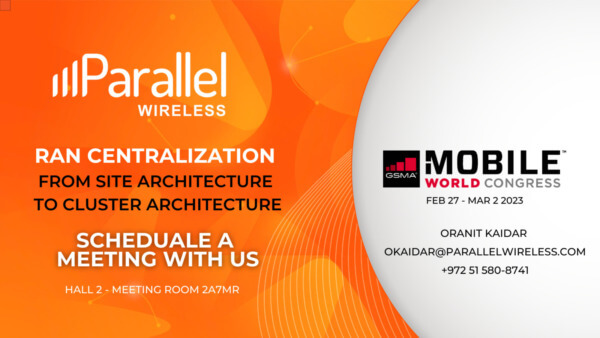RAN Centralization: From Site Architecture to Cluster Architecture
Summary
The benefits of Parallel Wireless' RAN Centralization technology and how it is disrupting the traditional wireless status quo.
Traditionally, mobile networks have been operated, deployed, and managed through a distributed system, where functions are spread across multiple cell sites and require dedicated infrastructure and resources at each site. This approach can is inflexible and resource-intensive, making it difficult for mobile network operators (MNOs) to respond to dynamic changes happening across the network.
Enter Parallel Wireless, which has developed a completely new architecture for mobile networks that is managed in cluster modules rather than site modules. This technology allows for a baseband to manage 300 sectors instead of just 3, bringing a level of efficiency and flexibility previously unimaginable in the wireless industry.
In this post, we will delve into the benefits of Parallel Wireless’ RAN Centralization technology and how it is disrupting the traditional wireless status quo.
RAN Centralization’s groundbreaking technology provides the following benefits:
Cost savings: By centralizing RAN functions, MNOs can reduce their CAPEX and OPEX expenses. This technology allows for the sharing of resources across multiple sites, resulting in a more efficient network, a smaller footprint, and reduced power consumption.
Network elasticity: The Centralized RAN architecture technology offers greater agility and flexibility. RAN Centralization technology and cluster architecture allow the network to be elastic, providing resources to where it’s most required.
Resilience: The Centralized RAN architecture allows the network to respond in real-time to dynamic changes, better utilizing the resources, essentially making it active and self-healing.
Improved performance: Centralized RAN technology allows MNOs to leverage the latest innovations and technologies to improve the performance of their networks. For example, advanced features such as full CoMP, multi-site CA, and multi-site MU-MIMO become more appealing when RAN functions are centralized and managed from a single location.
Spectrum efficiency: Since centralized RAN controls the entire cluster, carrier balancing and subscriber steering is a holistic part of the network as opposed to a response to difficulties of network status. In centralized RAN, the decision of subscriber allocation is inherent. As such the efficiency of the given spectrum is much greater than the site architecture.
Greater efficiency: Fully Centralized RAN technology enables advanced approaches for data center utilization, with region/cluster level resource pooling and sophisticated resiliency mechanisms. This can drive compute and memory allocation per carrier/site down by as much as 50%. The technology also supports a dynamic cellular load and RAN workload management, enabling efficient management of network resources.
Furthermore, centralized RAN deployment will result in significant cost savings and improved power efficiency. Furthermore, installation and maintenance at cell sites can be simplified, requiring lower skill levels, and reducing OPEX.
In conclusion, Parallel Wireless’ RAN Centralization technology is revolutionizing the way mobile networks are operated, deployed, and managed. Its innovative cluster module architecture allows for a level of efficiency and flexibility previously unimaginable in the wireless industry, while also providing numerous benefits such as reduced costs, increased network capacity, and improved network coverage.
This groundbreaking technology has the potential to fundamentally change the wireless landscape, making it easier for mobile network operators to respond to dynamic changes and meet the evolving needs of their customers.
